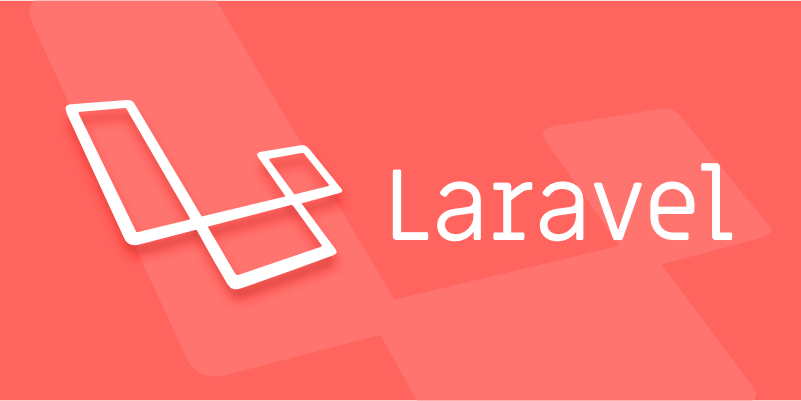Laravel's resource routing automatically generates the corresponding routes for seven CRUD operations through a line of code. When you use Route::resource('photos', PhotoController::class);, Laravel will create seven routes: index, create, store, show, edit, update and destroy, respectively, corresponding to the methods in the controller, and generate URIs based on the resource name. You can also use only or except methods to specify the generated route, such as keeping index and show only, or excluding create and store; you can also change the default parameter name through the parameters method, such as changing {photo} to {my_photo}. In the controller, the method processing logic of naming specifications should be followed. In the view, it is recommended to use the route() function to cooperate with named routes to generate links or forms, thereby improving application flexibility and maintainability.

When you're working with Laravel and dealing with routes, the resource route is one of the most efficient tools for quickly setting up standard CRUD operations. It automatically maps HTTP methods to controller methods, saving you from manually defining each route. The real power comes when you understand how to use it effectively without getting tripped up by its defaults.

What Does a Resource Route Do?
When you define a route like this:
Route::resource('photos', PhotoController::class);
Laravel creates seven routes for handling CRUD operations: index , create , store , show , edit , update , and destroy . These correspond to the usual controller methods, and the URIs are based on the resource name you provide.

For example, the edit method for the PhotoController will be mapped to /photos/{photo}/edit and expect a GET request. Each of these routes also maps to a named route, like photos.edit , which is super useful when generating URLs or redirects in your views or controllers.
Customizing the Resource Routes
Sometimes you don't need all seven routes — maybe your app doesn't have an "edit" form, or you want to exclude delete functionality. Laravel lets you control which routes are generated using the only or except methods:

Route::resource('photos', PhotoController::class)->only([
'index', 'show'
]);
Route::resource('photos', PhotoController::class)->except([
'create', 'store'
]);This helps keep your route list clean and secure by not exposing unnecessary endpoints.
Another thing you might want to customize is the parameter name used in the route. By default, Laravel uses the singular version of the resource name (like {photo} for photos ). If you want to change that:
Route::resource('photos', PhotoController::class)->parameters([
'photo' => 'my_photo'
]); Now your routes will use {my_photo} instead of {photo} in the URLs.
How to Use Resource Routes in Controllers and Views
Once your routes are set up, your controller should follow the expected method names:
-
index()– Show a list of resources -
create()– Show the form to create a new resource -
store(Request $request)– Save the new resource -
show($id)– Display a specific resource -
edit($id)– Show the form to edit a resource -
update(Request $request, $id)– Save the updated resource -
destroy($id)– Delete the resource
In your views, especially when generating links or forms, always use the named routes. For example:
<a href="{{ route('photos.edit', $photo->id) }}">Edit Photo</a>Or for forms:
<form action="{{ route('photos.destroy', $photo->id) }}" method="POST">
@csrf
@method('DELETE')
<button type="submit">Delete</button>
</form>Using named routes ensures your app remains flexible even if the URL structure changes later.
That's basically how the resource route works in Laravel. It's straightforward once you understand what it generates and how to tweak it. The key is knowing when to stick with the defaults and when to customize based on your app's needs.
The above is the detailed content of Using the `resource` route in Laravel.. For more information, please follow other related articles on the PHP Chinese website!

Hot AI Tools

Undress AI Tool
Undress images for free

Undresser.AI Undress
AI-powered app for creating realistic nude photos

AI Clothes Remover
Online AI tool for removing clothes from photos.

Clothoff.io
AI clothes remover

Video Face Swap
Swap faces in any video effortlessly with our completely free AI face swap tool!

Hot Article

Hot Tools

Notepad++7.3.1
Easy-to-use and free code editor

SublimeText3 Chinese version
Chinese version, very easy to use

Zend Studio 13.0.1
Powerful PHP integrated development environment

Dreamweaver CS6
Visual web development tools

SublimeText3 Mac version
God-level code editing software (SublimeText3)
 How to handle transactions in Java with JDBC?
Aug 02, 2025 pm 12:29 PM
How to handle transactions in Java with JDBC?
Aug 02, 2025 pm 12:29 PM
To correctly handle JDBC transactions, you must first turn off the automatic commit mode, then perform multiple operations, and finally commit or rollback according to the results; 1. Call conn.setAutoCommit(false) to start the transaction; 2. Execute multiple SQL operations, such as INSERT and UPDATE; 3. Call conn.commit() if all operations are successful, and call conn.rollback() if an exception occurs to ensure data consistency; at the same time, try-with-resources should be used to manage resources, properly handle exceptions and close connections to avoid connection leakage; in addition, it is recommended to use connection pools and set save points to achieve partial rollback, and keep transactions as short as possible to improve performance.
 How to work with Calendar in Java?
Aug 02, 2025 am 02:38 AM
How to work with Calendar in Java?
Aug 02, 2025 am 02:38 AM
Use classes in the java.time package to replace the old Date and Calendar classes; 2. Get the current date and time through LocalDate, LocalDateTime and LocalTime; 3. Create a specific date and time using the of() method; 4. Use the plus/minus method to immutably increase and decrease the time; 5. Use ZonedDateTime and ZoneId to process the time zone; 6. Format and parse date strings through DateTimeFormatter; 7. Use Instant to be compatible with the old date types when necessary; date processing in modern Java should give priority to using java.timeAPI, which provides clear, immutable and linear
 Python for Data Engineering ETL
Aug 02, 2025 am 08:48 AM
Python for Data Engineering ETL
Aug 02, 2025 am 08:48 AM
Python is an efficient tool to implement ETL processes. 1. Data extraction: Data can be extracted from databases, APIs, files and other sources through pandas, sqlalchemy, requests and other libraries; 2. Data conversion: Use pandas for cleaning, type conversion, association, aggregation and other operations to ensure data quality and optimize performance; 3. Data loading: Use pandas' to_sql method or cloud platform SDK to write data to the target system, pay attention to writing methods and batch processing; 4. Tool recommendations: Airflow, Dagster, Prefect are used for process scheduling and management, combining log alarms and virtual environments to improve stability and maintainability.
 Comparing Java Frameworks: Spring Boot vs Quarkus vs Micronaut
Aug 04, 2025 pm 12:48 PM
Comparing Java Frameworks: Spring Boot vs Quarkus vs Micronaut
Aug 04, 2025 pm 12:48 PM
Pre-formanceTartuptimeMoryusage, Quarkusandmicronautleadduetocompile-Timeprocessingandgraalvsupport, Withquarkusoftenperforminglightbetterine ServerLess scenarios.2.Thyvelopecosyste,
 How does garbage collection work in Java?
Aug 02, 2025 pm 01:55 PM
How does garbage collection work in Java?
Aug 02, 2025 pm 01:55 PM
Java's garbage collection (GC) is a mechanism that automatically manages memory, which reduces the risk of memory leakage by reclaiming unreachable objects. 1.GC judges the accessibility of the object from the root object (such as stack variables, active threads, static fields, etc.), and unreachable objects are marked as garbage. 2. Based on the mark-clearing algorithm, mark all reachable objects and clear unmarked objects. 3. Adopt a generational collection strategy: the new generation (Eden, S0, S1) frequently executes MinorGC; the elderly performs less but takes longer to perform MajorGC; Metaspace stores class metadata. 4. JVM provides a variety of GC devices: SerialGC is suitable for small applications; ParallelGC improves throughput; CMS reduces
 Using HTML `input` Types for User Data
Aug 03, 2025 am 11:07 AM
Using HTML `input` Types for User Data
Aug 03, 2025 am 11:07 AM
Choosing the right HTMLinput type can improve data accuracy, enhance user experience, and improve usability. 1. Select the corresponding input types according to the data type, such as text, email, tel, number and date, which can automatically checksum and adapt to the keyboard; 2. Use HTML5 to add new types such as url, color, range and search, which can provide a more intuitive interaction method; 3. Use placeholder and required attributes to improve the efficiency and accuracy of form filling, but it should be noted that placeholder cannot replace label.
 Comparing Java Build Tools: Maven vs. Gradle
Aug 03, 2025 pm 01:36 PM
Comparing Java Build Tools: Maven vs. Gradle
Aug 03, 2025 pm 01:36 PM
Gradleisthebetterchoiceformostnewprojectsduetoitssuperiorflexibility,performance,andmoderntoolingsupport.1.Gradle’sGroovy/KotlinDSLismoreconciseandexpressivethanMaven’sverboseXML.2.GradleoutperformsMaveninbuildspeedwithincrementalcompilation,buildcac
 go by example defer statement explained
Aug 02, 2025 am 06:26 AM
go by example defer statement explained
Aug 02, 2025 am 06:26 AM
defer is used to perform specified operations before the function returns, such as cleaning resources; parameters are evaluated immediately when defer, and the functions are executed in the order of last-in-first-out (LIFO); 1. Multiple defers are executed in reverse order of declarations; 2. Commonly used for secure cleaning such as file closing; 3. The named return value can be modified; 4. It will be executed even if panic occurs, suitable for recovery; 5. Avoid abuse of defer in loops to prevent resource leakage; correct use can improve code security and readability.






